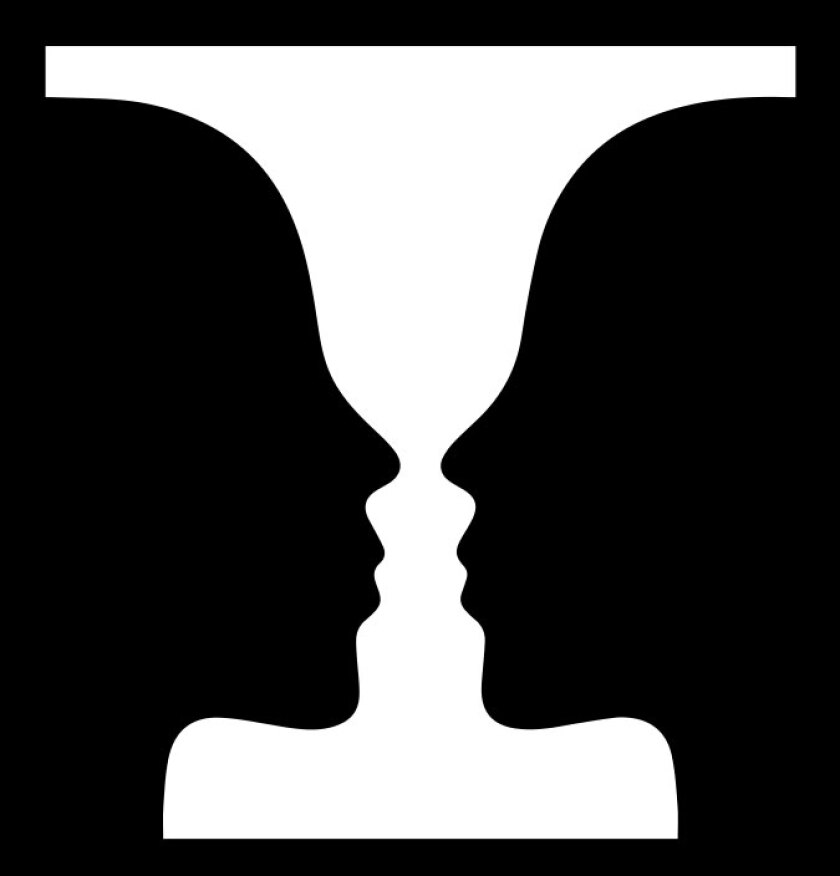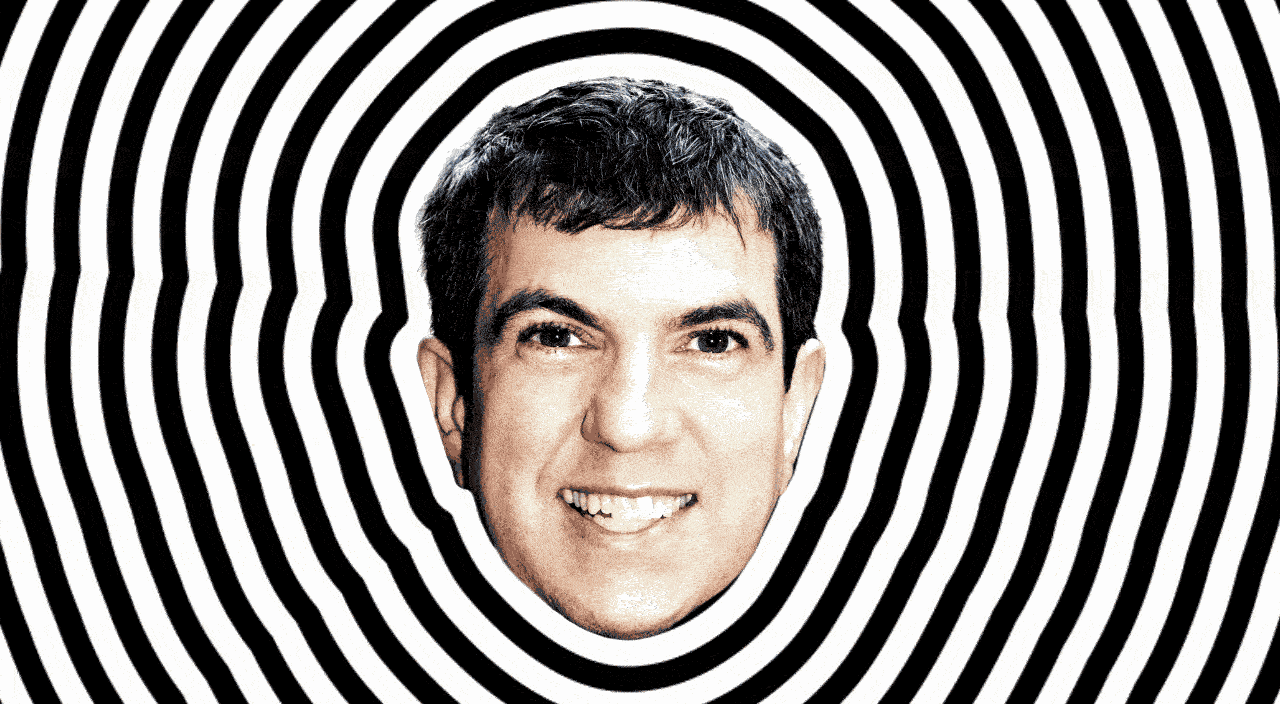I loved optical illusions as a kid. I could spend hours staring at them; they were my ’70s equivalent of TikTok.
During the pandemic, I returned to my love of puzzles of all kinds, including optical illusions, and wrote a book about their science, history and benefits. I realized that part of the reason I love optical illusions so much is that they aren’t just silly tricks of the eye. I believe they contain deep wisdom. Seriously.
1. The Two Circles Illusion
Life lesson: Comparison is the thief of joy.

Which orange circle is bigger, the left or the right? The answer is: The two orange circles are the same size. The one on the left just looks smaller because it’s nestled inside all those big gray circles.
This is the visual equivalent of the phrase “everything is relative.”
And it’s a crucial bit of wisdom to keep in mind. For instance, I can be grateful that I have enough money to live a comfortable life, or I can compare myself to Bezos and other gigantic circles, and stew that I’ll never get my own phallic-shaped rocket.
2. The Rubin’s Vase illusion
Life lesson: Change your viewpoint, change your reality.

What do you see? A vase? Or two people facing each other? Danish psychologist Edgar John Rubin published this back in 1915 to show that what you see depends on your preconceptions.
If you come to the image looking for a vase, you’ll probably see the vase. If you’re thinking about faces — maybe you just spent your afternoon working on a family photo album — you’ll probably see the faces.
Our mental frames change the way we interpret the world. As with the vase and the faces, there are often different ways to interpret the same situation. If I’m feeling jittery before a speech, how do I interpret that? Fear or excitement? It’s up to me. If I get patted down by the TSA at the airport, I could see that as an invasion of my bodily privacy. But what if I reframe it as a free massage? Okay, that one doesn’t always work.
3. The Pac-Man Illusion
Life lesson: Our brains fill in life’s gaps — and not always accurately.

When you look at this illusion — whose official name is the Kanizsa Triangle — you probably clearly see a white triangle. Which isn’t there. It’s just that those Pac-Men in the corners suggest a triangle, and our brains fill in the rest.
Our brains are filling-in machines. They evolved to create a coherent story out of bits of often random and unrelated episodes. When someone doesn’t return your email, your logical reaction is to think their behavior is about you when in fact there are likely factors in their life that you know nothing about. It’s crucial to recognize how much we fill in the gaps between life’s happenings — and to understand that the narratives we concoct are often based on missing information.
4. The Missing Square Puzzle
Life lesson: Even smart guys are easy to deceive

Where the hell did the missing square go, you ask? The two triangles may look identical, but they are not, nor are they even triangles. In one, the hypotenuse (the long side) bends just a bit inwards. In the other, it bends just a bit outwards, creating enough room for an extra square.
This seems an apt illusion for our age of misinformation and disinformation. Adjust the facts just a little this way or that way, and the truth can disappear. Pay close attention to your info sources, and make sure they are as straight as possible.





